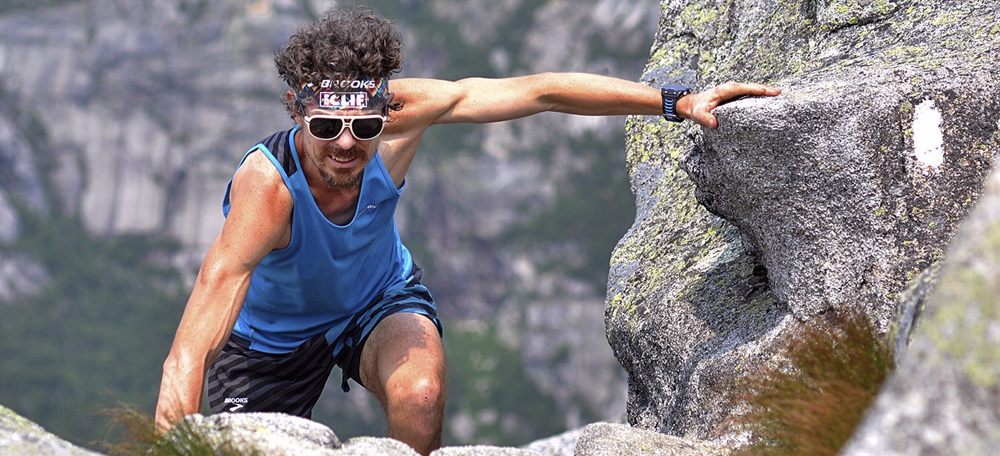Maine should have played a key supporting role in Scott Jurek’s record-breaking run along the Appalachian Trail. Instead, the state came off as something of a villain.
Jurek, a world-renowned endurance athlete, covered the AT’s 2,185 miles in just 46 days, finishing with a celebration atop the 5,627-foot Baxter Peak, the highest point on Mount Katahdin and the northern terminus of the AT.
He was then issued three summonses for alleged violations of Baxter State Park rules.
That was an overreaction by park officials. But it accomplished their goal – shining a light on the rapidly increasing use of the park by AT “thru-hikers” and the inordinate amount of stress that it puts on the park’s resources.
With park officials and various AT groups now meeting to address those concerns, they should work toward the only acceptable solution: keeping Baxter State Park as part of the Appalachian Trail.
There is no reason the two cannot coexist, and no reason Maine can’t benefit from its connection with the world-famous AT.
SOMETIMES, JUST LET THE RULES BE BENT
The park’s heated response to Jurek’s run has been met with a lot of criticism, partially because it seemed to come out of nowhere, and was directed at someone whose trek, except for speed and a worldwide following, was not unlike the hundreds of others that end at Mount Katahdin each year.
Sure, Jurek celebrated at the peak with a bottle of champagne, in violation of the letter of Baxter’s laws.
But a hike to the top of Katahdin in late summer or early fall, when thru-hikers arrive en masse, will provide the same scene, played out with cans of beer, bottles of liquor and cigars.
The celebrations are joyous but brief, and usually not at all disruptive. More often than not, staff members look the other way, as they should. It’s another world on top of the mountain. The rules should bend a little.
In Jurek’s case, though, they were inflexible to the point of absurdity (spilled champagne, for example, led to a littering citation).
In addition, Baxter officials overstated his violations and gave an inaccurate, overdramatic account of what happened the day he summited the mountain.
That made Maine look less than inviting. Baxter and Katahdin should be a draw. Now, many out-of-staters think they are run by killjoys.
GROWING CONFLICT BETWEEN PARK, TRAIL
But the eruption over Jurek’s run had much less to do with him and more to do with a growing schism between Baxter officials and the overseers of the Appalachian Trail.
The conflict between the park and trail, each with its own culture and goals, had been building for a few years.
Last year, more than 2,000 long-distance hikers registered at Baxter State Park, up from just 359 in 1991 and about 1,000 in 2004. About 800 hikers finished the entire AT in 2014, up from 472 just six years before.
Those numbers are expected to continue to rise, a trend that is OK with the groups and clubs that maintain the AT, but not with the caretakers of Baxter State Park.
That conflict was laid out in a letter last year from Jensen Bissell, the park’s director, to the executive director of the Appalachian Trail Conservancy.
AT hikers, Bissell says, represent just 3 percent of park users, but require a lot of oversight. More staff and additional infrastructure are needed to support them, he wrote, and the park is not willing to pay for them.
That’s not nearly enough to justify pulling Baxter from the AT, as Bissell has threatened. But these are legitimate concerns, and after the furor over the Jurek run calms down, they should be addressed.
However, the goal must be to keep the park and the trail as partners, and Mount Katahdin as the last, celebratory stop on one of the world’s most famous hikes.
Copy the Story LinkSend questions/comments to the editors.



Success. Please wait for the page to reload. If the page does not reload within 5 seconds, please refresh the page.
Enter your email and password to access comments.
Hi, to comment on stories you must . This profile is in addition to your subscription and website login.
Already have a commenting profile? .
Invalid username/password.
Please check your email to confirm and complete your registration.
Only subscribers are eligible to post comments. Please subscribe or login first for digital access. Here’s why.
Use the form below to reset your password. When you've submitted your account email, we will send an email with a reset code.